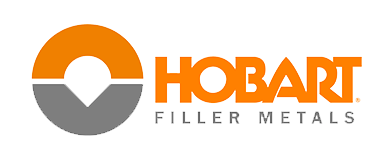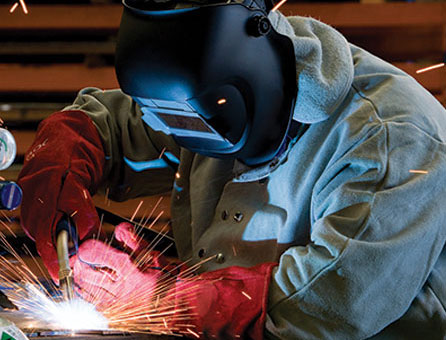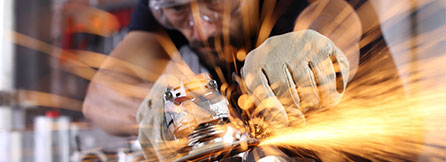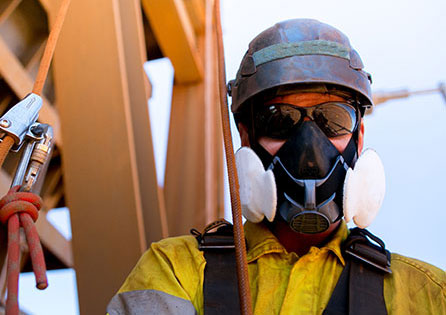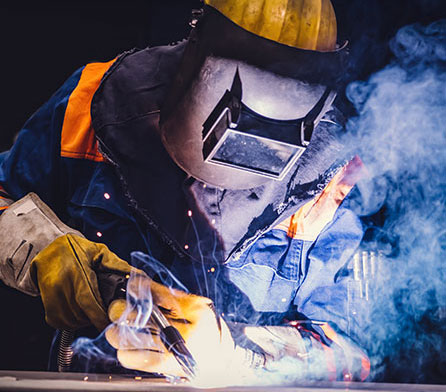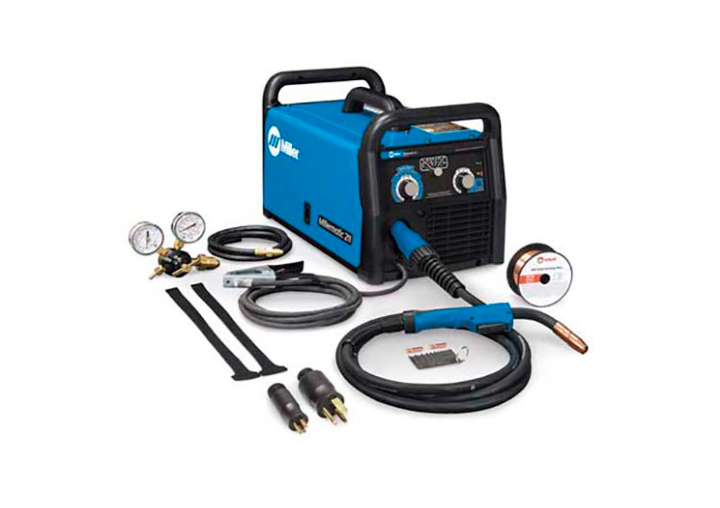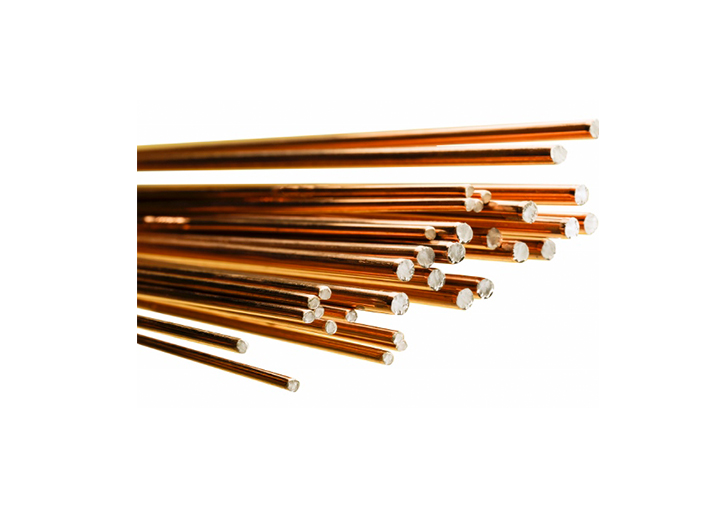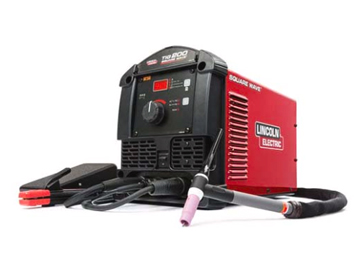A Look at The History of Welding
Welding is a transformative process that has played a pivotal role in shaping the modern world. From ancient techniques of forge welding to cutting-edge technologies like laser welding, the history of welding is a journey through time that mirrors humanity's relentless pursuit of innovation and progress. Who first invented welding? Let’s take a look.
When Did Welding Begin?
The origin of welding can be traced back to Egypt, where early metalworkers discovered the art of joining metals through heat and pressure. The oldest form of welding, forge welding, dates to the Bronze Age, around 3,000BC. This process involved heating metal pieces to a malleable state and then hammering or pressing them together to form a bond.
Examples in history include pressure welding lap joints to create circular boxes with gold, around 2,000 years ago, as well as jewelry, eating utensils and weapons. Ancient blacksmiths discovered how to turn iron into steel at about 600AD and began welding and forging steel swords. Their primitive but effective techniques laid the foundation for the metallurgical advancements that would follow.
The Middle Ages and the Renaissance
During the Middle Ages, welding techniques continued to evolve. The advent of water-powered hammers and improved furnaces facilitated more efficient forge welding. As metalworking skills progressed, craftsmen began to experiment with different alloys, expanding the range of materials that could be joined.
The first printed book on metallurgy was published in 1540 by Italian metallurgist Vannoccio Biringuccio. The Renaissance period saw further advancements in metallurgy, with Leonardo da Vinci contributing sketches and ideas related to welding in his notebooks. However, welding during this era remained largely a manual and labor-intensive process.

The Industrial Revolution and the Rise of Arc Welding
The 19th century marked a significant turning point in the history of welding with the onset of the Industrial Revolution. The demand for more efficient and rapid manufacturing processes led to the development of new welding methods. In 1800, Sir Humphry Davy discovered the electric arc, a crucial breakthrough that laid the groundwork for modern arc welding.
Edmund Davy, Sir Humphrey's cousin, was credited with the discovery of acetylene in 1836. Continued discoveries led to the development of the electric generator, gas welding and cutting, as well as more stable arc-welding, mid-century. However, it wasn't until the late 19th century that arc welding gained practical application.
In 1881, Russian inventor Nikolai Benardos and his compatriot Stanislav Olszewski patented the first practical arc welding method, which utilized a carbon electrode to create an electric arc. This method was initially employed for welding lead plates in the construction of storage batteries. The concept of arc welding spread to other parts of Europe and the United States, leading to further innovations and improvements.
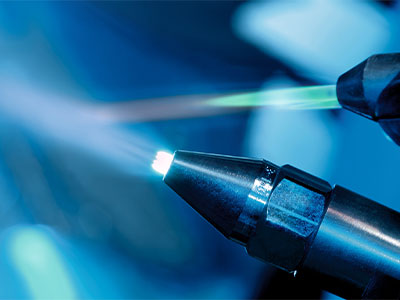 The Birth of Oxy-Acetylene Welding
The Birth of Oxy-Acetylene Welding
While arc welding was gaining momentum, another revolutionary welding method was emerging – oxy-acetylene welding. In 1903, French engineers Edmond Fouché and Charles Picard patented the oxy-acetylene welding process. This technique involved using a torch to burn acetylene gas in the presence of oxygen, creating a flame with temperatures sufficient to melt and weld metals.
Oxy-acetylene welding quickly gained popularity due to its versatility and portability. It allowed for more precise control over the welding process and was particularly well-suited for applications in construction, shipbuilding, and automotive industries. This method became a cornerstone in the world of welding,
influencing various industries and paving the way for the development of other gas welding processes.
Welding at The Turn of The 20th Century
At the turn of the century, a coated electrode was invented by Arthur Percy Strohmenger which featured a simple coating of clay or lime. This coating surprisingly provided stability in the welding arc. A more advanced coated electrode was developed around 1910 in Sweden utilizing thick mixtures of silicates and carbonates. During this season, related technologies, such as resistance welding thermite welding on railroad rails continued to develop.
World War I and the Advancements in Welding Technology
The outbreak of World War I presented new challenges and opportunities for welding technology. The demand for rapid production of military equipment spurred innovations in welding techniques. The use of welding in shipbuilding, automotive manufacturing, and munitions production became widespread during the war.
One notable development was the refinement of shielded metal arc welding (SMAW), also known as stick welding. In 1919, Russian-born engineer P.O. Nobel patented a coated electrode that significantly improved the stability and efficiency of the welding process. This innovation made SMAW more accessible and led to its widespread adoption in various industries.
Also in 1919, the American Welding Society (AWS) was established as a nonprofit organization dedicated to providing dependable and objective information on the advancement of welding technology and related processes.
The AWS grew to over 200 members during its first year. The first local chapter was organized the following year in Philadelphia, PA. By 1922, the AWS was holding annual meetings and organizing additional local chapters. It was at this time that the first iteration of what we now know as the “Welding Journal” publication was born.
Interwar Period and World War II
The interwar period saw further refinements and expansions in welding applications. The introduction of gas metal arc welding (GMAW) in the 1930s by the General Electric Company marked a significant milestone. Bernardos, one of the pioneers of arc welding, contributed to the development of GMAW, which utilized a continuously
fed electrode wire to form an arc. 
World War II intensified the demand for welding as industrial production reached unprecedented levels. Welding played a crucial role in the construction of military equipment, ships, and aircraft. The war effort accelerated research and development in welding technology, leading to the emergence of new methods and equipment.
In 1929, the Lincoln Electric Company was producing extruded stick electrodes and within a year, they were widely used. Welding codes also appeared about this time, greatly improving weld quality when adhered to, and increasing the demand for coated stick electrodes.
In 1930, stud welding was developed at the New York Naval Ship Yard for the attachment of wooden decks to ship’s metal surfaces. During this expansion of welding technology, submerged arc welding was also developed for use in a pipe mill. The process was patented in 1930 and the technology was sold to Linde who changed the name of the process to Union Melt.
Post-War Era and the Rise of Submerged Arc Welding
The post-war period witnessed a surge in industrial development and the widespread use of welding in various sectors. During the late 1940s, submerged arc welding (SAW) emerged as a highly efficient method for welding thick sections of steel. Created by the National Tube Company and further developed by Linde Air Products/Union Carbide, SAW involved submerging the welding arc and molten weld pool beneath a layer of granular flux, providing protection from atmospheric contamination.
Submerged arc welding found applications in shipbuilding, pipeline construction, and the fabrication of heavy machinery. Its ability to produce high-quality welds at a rapid pace contributed to its popularity in large-scale, heavy manufacturing processes.
|
|
|
By 1941, TIG welding had matured and was patented by Russell Meredith from initial concepts developed in the 1920’s using helium or argon for shielding gas. Due to the gas choices, it was dubbed heliarc welding. This process paved the way for precise and high-quality welding of non-ferrous metals, stainless steel, and aluminum.
The 1950s and the Golden Age of Welding
The 1950s marked the golden age of welding, characterized by continued advancements in technology and an expanding range of applications. In 1953, the CO2 welding process was developed, using consumable electrodes in a carbon dioxide welding atmosphere. A larger electrode was required as the CO2 gas made the process hotter than other similar processes.
Additionally, the introduction of plasma arc welding (PAW) in the early 1960s by Robert Gage further expanded the capabilities of welding. PAW utilized a constricted arc within a plasma gas stream, enabling the welding of materials with higher melting points.
The Digital Age and Automation in Welding 
The latter half of the 20th century witnessed the integration of electronics and computers into welding processes, leading to significant advancements in automation. The development of robotic welding systems in the 1960s marked a transformative moment, enabling precise and repetitive welding tasks in manufacturing.
Automated welding systems increased efficiency, reduced human error, and improved overall weld quality. The automotive industry embraced robotic welding for the assembly of car bodies, contributing to the mass production of vehicles.
Modern Welding Technologies
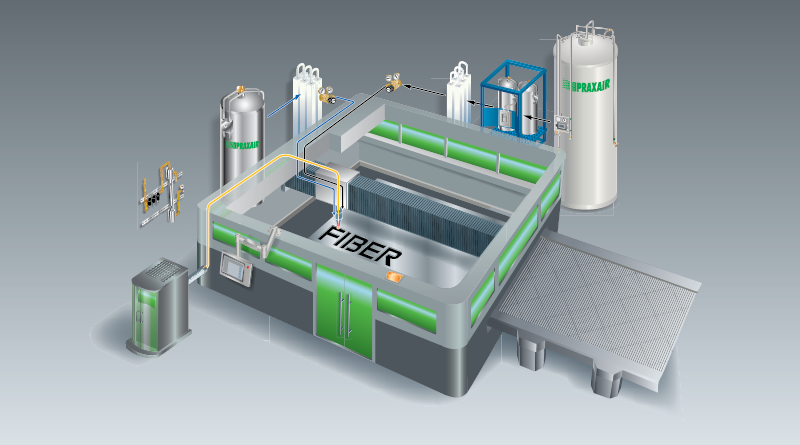 The 21st century has seen a proliferation of cutting-edge welding technologies, driven
by advancements in materials science, automation, and computerization. Laser welding,
for instance, has become a popular method for high-speed, precision welding in industries such as electronics,
aerospace, and medical devices. The use of laser beams allows for non-contact welding with minimal heat-affected zones, making it ideal for delicate components.
The 21st century has seen a proliferation of cutting-edge welding technologies, driven
by advancements in materials science, automation, and computerization. Laser welding,
for instance, has become a popular method for high-speed, precision welding in industries such as electronics,
aerospace, and medical devices. The use of laser beams allows for non-contact welding with minimal heat-affected zones, making it ideal for delicate components.
Furthermore, electron beam welding (EBW) has found applications in industries requiring high-depth penetration and narrow heat-affected zones. EBW utilizes a focused beam of high-velocity electrons to generate the welding arc, making it suitable for materials with high melting points.
Challenges and Future Prospects
While welding has come a long way from its humble beginnings, challenges persist in the form of environmental concerns, safety issues, and the need for continuous improvement. Efforts are being made to develop more sustainable welding processes, reduce energy consumption, and minimize the environmental impact of welding operations.
The future of welding also holds promise in the integration of artificial intelligence and machine learning. Smart welding systems equipped with sensors and data analytics capabilities can enhance real-time monitoring, quality control, and predictive maintenance. This evolution toward intelligent welding systems aligns with the broader trend of Industry 4.0, where digitalization and connectivity drive manufacturing processes.
Conclusion
The history of welding is a testament to human ingenuity and the relentless pursuit of innovation. From the rudimentary forge welding of ancient civilizations to the precision of modern laser welding, the evolution of welding has mirrored the progress of society and industry. Each era has contributed to the development of new techniques, materials, and applications, shaping welding into the versatile and indispensable process it is today.
As we stand on the cusp of a new era with emerging technologies like artificial intelligence and smart manufacturing, the future of welding holds exciting possibilities. The continued collaboration between scientists, engineers, and industry professionals will undoubtedly lead to further advancements, ensuring that welding remains at the forefront of technological progress for generations to come.





















